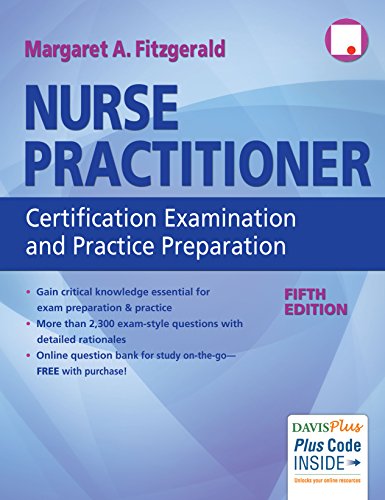The healthcare industry is one of the vital systems of our society. Access to safe and quality healthcare services became more possible with the help of a group of professionals gathered together with their different expertise in the field of medicine to serve the people in need of their assistance. Both Physician Assistants and Nurse Practitioners fill that role. Let’s look at both of these specialties and discuss the differences.
Physician Assistant Vs Nurse Practitioner
This healthcare team is composed of members from different health allied courses such as doctors, nurses, medical technologists, pharmacists, physical therapists, and many more, etc. In particular, both physician assistants and nurse practitioners hold an advanced role in providing direct patient care. We can tell that PA’s and NP’s are similar but there are also many differences.
Physician Assistants
Physician assistants (PA) are allowed to examine, diagnose, and treat patients autonomously while being under a collaborative agreement with a physician. A licensed physician may supervise a physician assistant even if he or she is not present on the premises of the medical facility. PAs can give primary care to patients and the extent of their duty depends on the city where they work.
Nurse Practitioners
Nurse practitioners (NP) are advanced practice registered nurses who have more responsibilities than registered nurses such as being able to perform acute and preventive care check-ups and order prescriptions. The duties and responsibilities of NPs may vary depending on the state they are practicing their profession. NPs are allowed to work independently but some states may require them to work under a physician’s supervision or on a collaborative agreement.
Day-to-day of a Healthcare Provider
Do Physician assistants and Nurse practitioners really have that many differences from each other? Or does their higher education equalize their duties to a licensed physician? It is a given that both of these professionals have independent functions in rendering primary care to patients. However, there is a middle ground on their basis and approach of care.
It may seem odd that both a physician assistant and nurse practitioner are bound to a collaborative agreement to a doctor and yet may render the same primary care services as a doctor. The differences lie between being in line with the available specialty areas where they can practice. Physician assistants can work in all areas of medicine such as family medicine, emergency medicine, hospital medicine, etc. While a nurse practitioner is more likely required to train to work in a particular specialty area like family practice or primary care.
The approach in patient care is also different for these two professions. A physician assistant uses a disease-centered approach. The basis of care depends primarily on the anatomy and physiology of the disease the patient has and looking at a medical pathology perspective for its treatment. While a nurse practitioner uses a holistic patient-centered approach in dealing with the patient’s concerns by considering their physical, mental, emotional, and spiritual state to provide proper interventions.
Career Journey: Physician Assistant vs Nurse Practitioner?
They may sound similar due to the fact that they are both independently licensed healthcare providers, but their career path into the professional they are in right now is far different from each other.
To enable your career as a physician assistant, it requires various educational credentials to be met in order to enter the program. Make sure that the physician assistant program you are applying for is accredited by the Accreditation Review Commission on Education for the Physician Assistant, Inc. (ARC-PA). A bachelor’s degree, master’s degree, and about at least 1,000 hours of direct patient care work experience, such as an Emergency Medical Technician (EMT), paramedics, or in nursing, can give you quite an edge to enter a PAs program. This program may take at least 2-3 academic years to be completed. Once you graduate the Physician Assistant education program you can take the Physician Assistant National Certifying Exam (PANCE) to earn a physician assistant-certified designation or state licensure. To maintain the PANCE’s certification, a physician assistant must re-certify every 10 years and may need 100 continuing medical education credits.
Aspiring nurse practitioners must have a bachelor’s degree in nursing and must be a registered nurse with patient care experience, and then pursue a graduate degree – Master of Science in Nursing is considered the minimum degree requirement to be an NP, or you can also obtain a Doctor of Nursing Practice degree as another credential for pursuing being a nurse practitioner. Once you qualify the program for an NP, you need to obtain a state license and certification. Ensure to re-certify every 5 years and meet the continuing education requirements of at least 1,000 clinical hours and 75 continuing education hours.
Both physician assistants and nurse practitioners underwent a lot of schooling before they can practice the profession they have. Yet all this continuing education didn’t stop them. So if the time comes that you are torn in between these two professions, weigh things and think which is the best fit for you.
Average Salary: Physician Assistant VS Nurse Practitioner
Being a worker in the healthcare industry may have some perks. Rendering your service to patients comes with good pay. According to the Bureau of Labor, as of May 2017, the nurse practitioner’s median annual salary is about $107,480 or $51.68 per hour of consultation. Also, the expected job growth from 2016 to 2026 is about 36% and about 56,100 positions are anticipated to be available by the year 2026.
For physician assistants, based on May 2017 reports of the Bureau of Labor, it is said that a physician assistant’s mean annual wage was at $104,760 or about $50.37 per hour. Also, the number of anticipated available positions by 2026 is at 39,600 and about 37% of expected job growth. This range of salary may still vary depending on what specialty you have, years of experience, and the state area you are practicing on. You may also continue to expand the knowledge of your expertise and carry on to improve your skills and potential.
More Resources:
- What is the Average Nurse Practitioner Salary
- Career Options and Outlook for Medical Assistants
- Nurse Practitioner or Doctor of Nursing Practice?
Physician Assistant: A Guide to Clinical Practice












